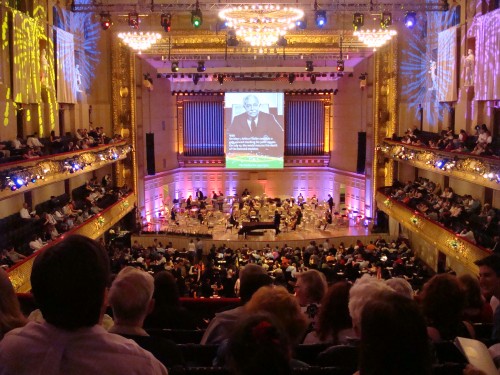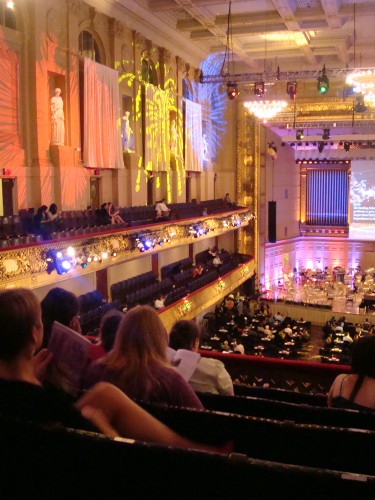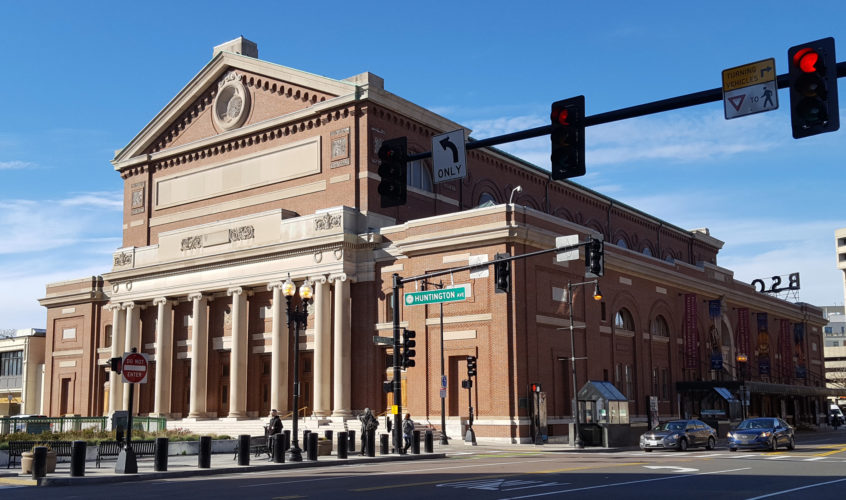
301 Huntington Ave, Boston, MA see map | Website for the Boston Symphony Orchestra
The following information is taken from:
A Guide to Public Art in Greater Boston by Marty Carlock, page 58
“As Symphony Hall neared completion at the turn of the century, the architects, McKim Mead and White, and their acoustical advisor Prof. Wallace C. Sabine, realized the blank wall surfaces abov ethe balconies would create dissonorities. Sabine theorized that concave niches could solve the problem, and that he could also conceal some unsightly experimental acoustic materials in the niches if statues were placed there.
A committee of civic benefactors selected and donated casts of well-known sculptures from antiquity, all of which can still be seen in European museums. Most were chosen because of some relation to the arts.”
Reproductions cast in plaster by Pietro Caproni,
c. 1900
 On the audience’s right, beginning nearest the stage, the sculptures are:
On the audience’s right, beginning nearest the stage, the sculptures are:
- Faun with Infant Baccus (original at Naples)
- Apollo Citharoedus, God of Music and Poetry (Rome)
- Girl of Herculaneum (Dresden)
- Dancing Faun (Rome)
- Demosthenes, Athenian orator (Rome)
- Sitting Anachreon, chief Greek poet of love and wine (Copenhagen)
- Euripedes, Greek tragic dramatist (Rome)
- Diana of Versailles, goddess of the hunt (Paris)
From the left, beginning at the stage:
- Resting Satyr of Praxiteles (Rome) the inspiration for Hawthorne’s novel The Marble Faun
- Amazon (Berlin) reputed to be the Greek sculptor Polyclitus’ winning entry in a sculptor’s competition for the Temple of Artemis at Ephesus, where the legendary female warriors took refuge from Dionysus in mythic times
- Hermes Logios, messenger and god of science, commerce, travel, eloquence, and cunning (Paris)
- Lemnian Athena, said to be the greatest work of the fifth-century Greek sculptor Phidias (torso at Dresden, head at Bologna)
- Sophocles, Athenia tragic poet (Rome)
- Standing Anacreon (Copenhagen)
- Aeschines, Athenian orator and political opponent of Demosthenes (Naples)
- Apollo Belvedere (Rome)

